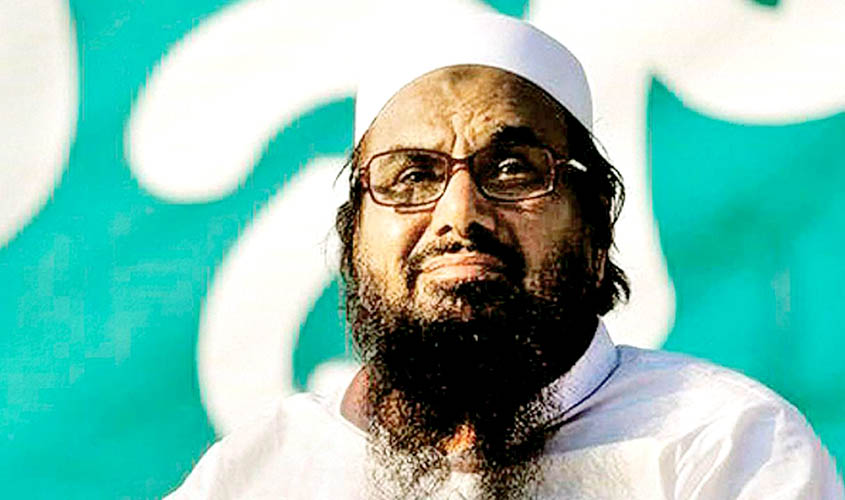Targeted killings by nations are permitted under international law in very narrow circumstances and must meet the ‘imminence test’ and the right to ‘self defence’.
New Delhi: The killing of Iran military commander Qassem Soleimani in a US drone strike in Baghdad has led to questions being raised in India as to whether India can use the same method to take out Jaish-e-Mohammed (JeM) chief Masood Azhar and Lashkar-e-Tayyaba (LeT) chief Hafiz Saeed.
Both Azhar and Saeed, who roam without any hindrance in Pakistan, are proclaimed absconders for their involvement in multiple terror attacks in India and are heading terror groups that are proscribed by India.
In February 2019, aircraft belonging to Indian Air Force had crossed Pakistan’s airspace boundaries and destroyed terror camps operated by Jaish at Balakot, Khyber Pakhtunkhwa province. However, these air strikes did not take out Masood Azhar or his brother Abdul Rauf Ashgar, who is seen as the brain behind Jaish terror activities,
Targeted killings by nations are permitted under international law in very narrow circumstances and must meet the “imminence test” and the right to “self defence”. Self-defence is described in the United Nations charter as the right to respond to an actual and significant armed attack.
As per established international laws, if a country feels that it needs to take preventive or punitive measures in response to terrorism, it must satisfy the principle of “necessity” and “proportionality” and also meet the requirement that it had taken prior express authorisation from the UN Security Council.
“Proportionality” in the present context means that the counter-attack needs to be reasonable and balanced with regards to the original illegal act, whereas “necessity” refers that the counter-attack should be carried out as the last resort to repel a further attack.
However, the United States, which is the world’s most prolific user of armed drones, has seldom intimated the UN Security Council, let alone take permission from it, before launching any armed drone strike, which it first did in Yemen in 2002 to target a suspected Al Qaeda operative.

Since 2004 and till the end of 2018, the US has carried out at least 430 drone strikes inside Pakistan, killing at least 2,500 people and a maximum of 4,000 people as per data compiled by the Bureau of Investigative Journalism, a nonprofit news organisation based in London. All these 400 plus strikes were ostensibly carried out to eliminate terrorists belonging to Taliban, Al Qaeda and ISIS, but they also took the lives of many innocent citizens who had nothing to do with any terror groups.
Interestingly, US government designated Soleimani as a terrorist in 2011. Both Jaish and Lashkar were designated by the US government as terror groups way back in December 2001. However, both these groups have made sure that they do not directly harm US interests whenever they carry out any terror attack.
Hence, as per international laws, if India were to carry out a drone strike today against Saeed or Masood, it would have to either take consent of the territorial state (Pakistan in this case ) or take authorisation of the UN Security Council or it should fire the drones in self-defence.
As is clear, justifying use of drone by quoting the “self defence” will be much easier for India rather than taking permission from Pakistan or the UN Security Council, as in both cases the element of time and secrecy, necessary for a successful kill, is likely to be lost.
Hence, it comes as no surprise that “self-defence” has been invoked by the US to justify drone strikes against Al Qaeda, as well as the Taliban in Afghanistan, Pakistan, Somalia and elsewhere.
International law also makes it clear that those who are a part of the banned armed groups, lose “protection” from such armed attacks.
It will be reasonably correct to say that if India had carried out a drone attack following the Pulwama bombing or post the 26/11 Mumbai attack targeting Jaish and Lashkar leadership, it would have passed the judicial scrutiny at the international level despite violating Pakistan’s airspace and territory.
Capabilities?
India has been late off the block when it comes to “collecting” armed drones that can carry out the task of eliminating individuals or terror groups, but has now started moving rapidly into purchasing armed drones.
In a situation where it decides to carry out a cross-border drone attack, the decision makers are likely to look towards the Israeli made Harop drone or P-4 as it has now been christened, that the Indian military possesses. The number of these drones that the Indian establishment possesses is more than 150.
These drones can fly for nine hours at a speed of over 400 km per hour (kmph) at a maximum altitude of 15,000 feet and carry with them 16 kg of warhead before coming down on the target in a self-destruct mode. The distance between Bahawalpur, where one of Jaish’s headquarters is located, and India’s westernmost point is less than 150 km.
India also has Heron Unmanned Aerial Vehicles (UAVs), a medium-altitude long-endurance drone capable of performing strategic and tactical missions, that can carry a payload of up to 500 kg. It is built to stay in the air for more than 45 hours, reach 35,000 feet height and has a flight range of 350 km.
Official sources said that India and US are engaged in advanced level of discussion related to the purchase of MQ-9 Reaper drone, also known as Predator B. The same drone was used to target Soleimani. However, officials said that the discussions regarding the purchase of these drones had been happening much before the Baghdad incident. The Reaper with a range of over 1,800 km has the ability to fly at altitudes of 50,000 feet and flies at a speed of roughly 370 kmph.

